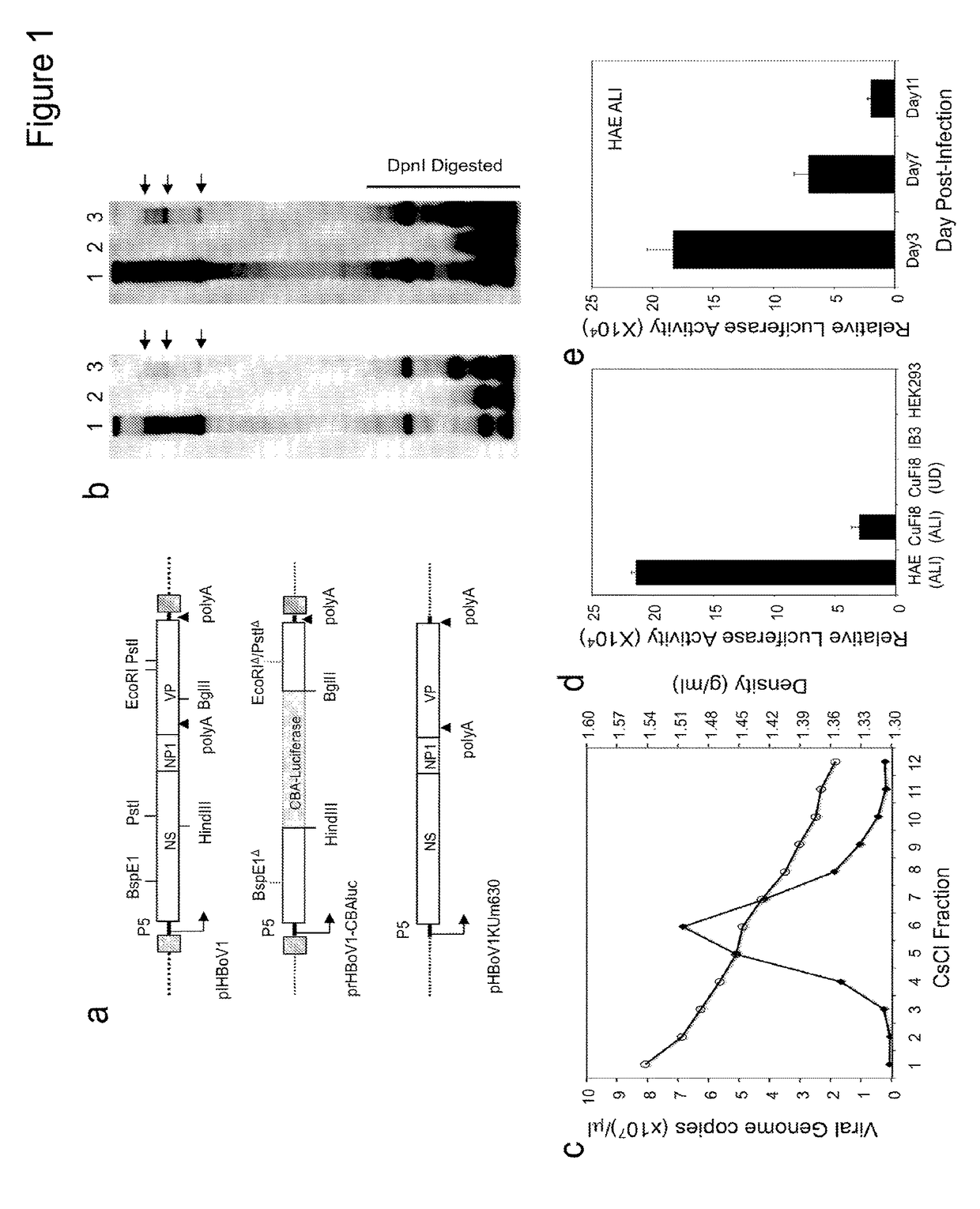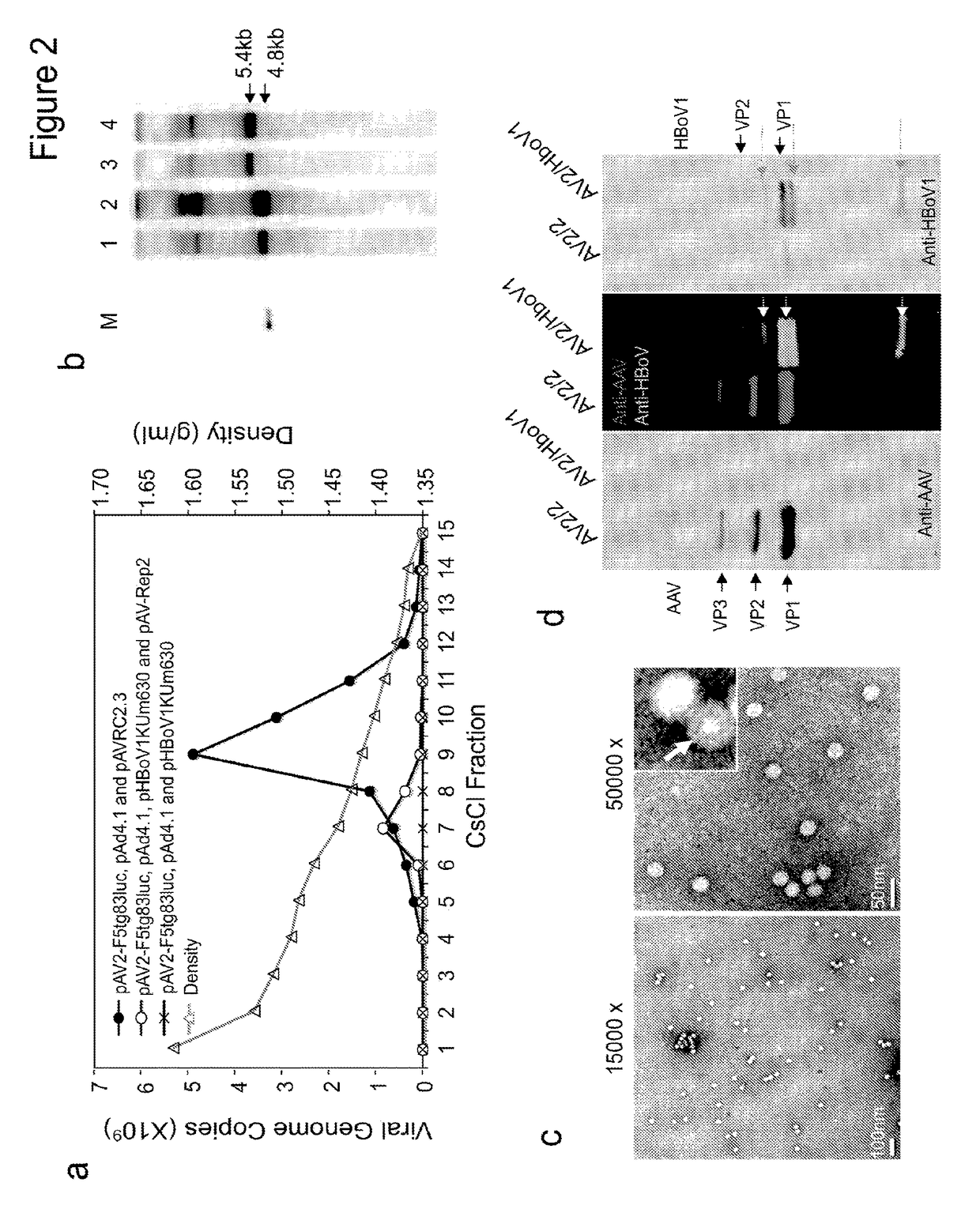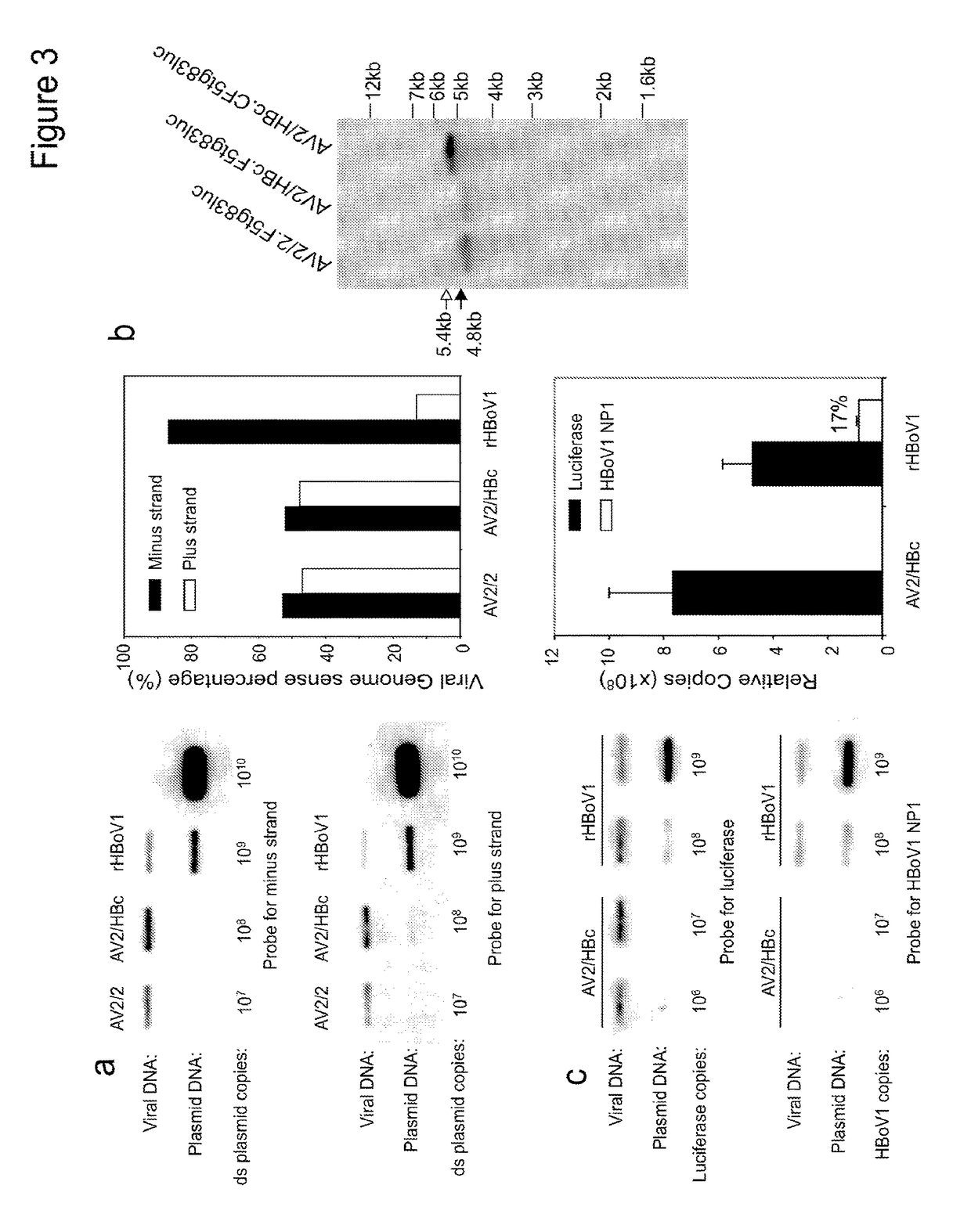Chimeric adeno-associated virus/ bocavirus parvovirus vector
a technology of bocavirus and adenovirus, which is applied in the field of bocavirus parvovirus vectors, can solve the problems of limited packaging capacity (4.9 kb), inability to achieve complementation in vivo, and ineffective cftr expression of raav vectors, and achieve the effect of enhancing expression of a transgen
- Summary
- Abstract
- Description
- Claims
- Application Information
AI Technical Summary
Benefits of technology
Problems solved by technology
Method used
Image
Examples
example 1
Materials and Methods
Cell Culture
[0185]Cell lines and primary cells. Human embryonic kidney 293 (HEK293) cells (CRL-1573), HeLa (CCL-2), MDCK (CCL-34), MRC-5 (CCL-171), LLC-MK2 (CCL-7), and Vero-E6 (CRL-1586) were obtained from American Type Culture Collection (ATCC, Manassas, Va.), and were cultured in Dulbecco's Modified Eagle Medium (DMEM) with 10% fetal calf serum (FCS). The cell lines originating from human airway epithelial cells are A549 (ATCC CCL-185), BEAS-2B (ATCC CRL-9609), 16HBE14o- (obtained from Dr. Dieter Gruenert), as well as NuLi-1 and CuFi-8 (Tissue and Cell Culture Core, Center for Gene Therapy, University of Iowa). NuLi-1 and CuFi-8 were immortalized from normal and cystic fibrosis human primary airway cells, respectively, by expressing hTERT and HPV E6 / E7 genes (Zabner et al., 2003). Primary Clonetics normal human bronchial / tracheal epithelial cells (NHBE) were purchased from Lonza (Walkersville, Md.). Cells were cultured in media following instructions provided...
example 2
Progeny HBoV1 Virions in the Apical Washes of Infected HAE are Highly Infectious in Polarized Primary HAE
[0237]In Example 1, HBoV1 virions were produced from HEK293 cells transfected with a HBoV1 infectious clone, which were further concentrated and purified through cesium chloride equilibrium ultracentrifugation. During this process, significant viral inactivation occurred (McClure et al., 2011), and the precise infectivity of the virus was difficult to determine. However, progeny virions were persistently secreted from the apical surface of infected HAE at a high titer (about 1.0×107 vgc / μL) (Huang et al., 2012). Hence, it was hypothesized that the progeny virions washed from the apical surface mimic naturally secreted virions from HBoV1-infected lung airway-tract and thus are highly contagious.
[0238]To test this hypothesis, polarized primary HAE cultures were obtained in Millicell™ inserts of 0.6 cm2 (Millipore) from the Tissue and Cell Culture Core of the Center for Gene Therapy...
example 3
Materials and Methods
[0247]Plasmids.
[0248]pIHBoV1 is the infectious clone plasmid containing the 5543 bp full-length HBoV1 genome (Huang et al., 2012). prHBoV1-CBAluc is a recombinant HBoV1 (rHBoV1) transfer plasmid derived from pIHBoV1 and was constructed by replacing the 2.64 kb HindIII / BgIII fragment of the HBoV1 genome by a 2.74 kb fragment containing the CMV enhancer / chicken β-actin promoter driven Luciferase gene. The NP1 gene, which plays an essential role in HBoV1 DNA replication, was completely removed in the resulting prHBoV1-CBAluc plasmid. To reduce the probability of rescued wild type virus through recombination, the 5′ remained NS gene coding region was further disrupted by elimination of a BspE1 site using blunt ligation, and the 3′ VP partial coding region was further deleted by removal of a 145 bp PstI to EcoRI fragment. The helper plasmid pHBoV1 KUm630 harbors the 5299 bp HBoV1 genome (99 to 5395-nt) without terminal repeats (Chen et al., 2010), with the P5 promote...
PUM
| Property | Measurement | Unit |
|---|---|---|
| diameter | aaaaa | aaaaa |
| volume | aaaaa | aaaaa |
| pH | aaaaa | aaaaa |
Abstract
Description
Claims
Application Information
 Login to View More
Login to View More - R&D
- Intellectual Property
- Life Sciences
- Materials
- Tech Scout
- Unparalleled Data Quality
- Higher Quality Content
- 60% Fewer Hallucinations
Browse by: Latest US Patents, China's latest patents, Technical Efficacy Thesaurus, Application Domain, Technology Topic, Popular Technical Reports.
© 2025 PatSnap. All rights reserved.Legal|Privacy policy|Modern Slavery Act Transparency Statement|Sitemap|About US| Contact US: help@patsnap.com



